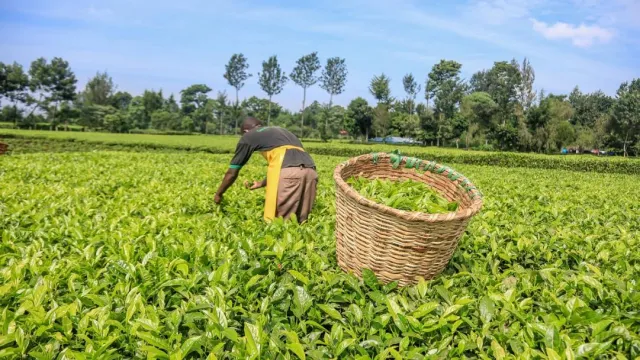Poor weather cuts first quarter tea output by 18 percent

Between January and March 2025, Tea Board of Kenya says the country's tea growing areas experienced extremely hot and dry weather, as well as delayed onset of the long rains, negatively impacting tea production.
Poor weather experienced in the first three months of the year saw Kenya's tea production decrease by 18.8 percent to 137 million kilos of green leaf.
According to an update by the Tea Board of Kenya (TBK), Kenya's tea output hit 169 million kilos during a similar quarter in 2024, attributable to favourable weather conditions during that season.
During this year's first quarter, TBK said the country's tea growing areas experienced extremely hot and dry weather, as well as delayed onset of the long rains, negatively impacting tea harvests.
"Going by the trend for the first quarter, production for the whole year is projected at 580 million kilograms, which will be lower compared to 594 million kilograms in 2024 but slightly higher than 570 million kilograms in 2023," the board said.
The counties of Bomet, Kericho, Nyamira, Nandi, Kisii, Nakuru, Narok are key tea production zones in the Rift Valley, which the TBK said they experienced the biggest dip in output. Other tea growing counties in Kenya are Kiambu, Murang'a, Nyeri, Kirinyaga, Embu, Tharaka-Nithi, and Meru in the country's central region.
A separate economic report by the Kenya National Bureau of Statistics indicated that revenue from tea exports fell by 20 percent in the first quarter, totaling 46.07 billion shillings (about 361 million U.S. dollars).
To date, Kenya remains the world's leading exporter of black tea, making the produce one of the key forex earners for the nation alongside horticulture, tourism and diaspora remittances.





